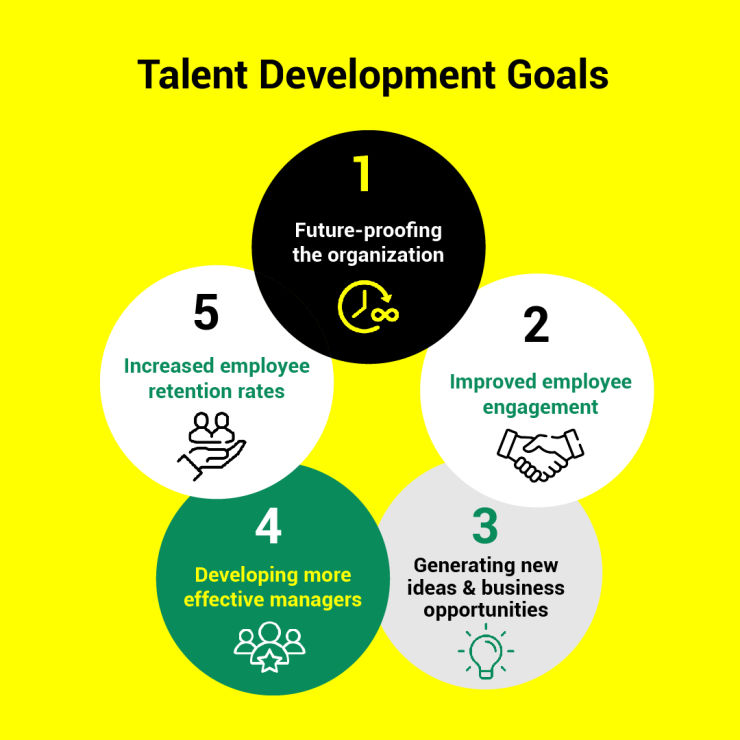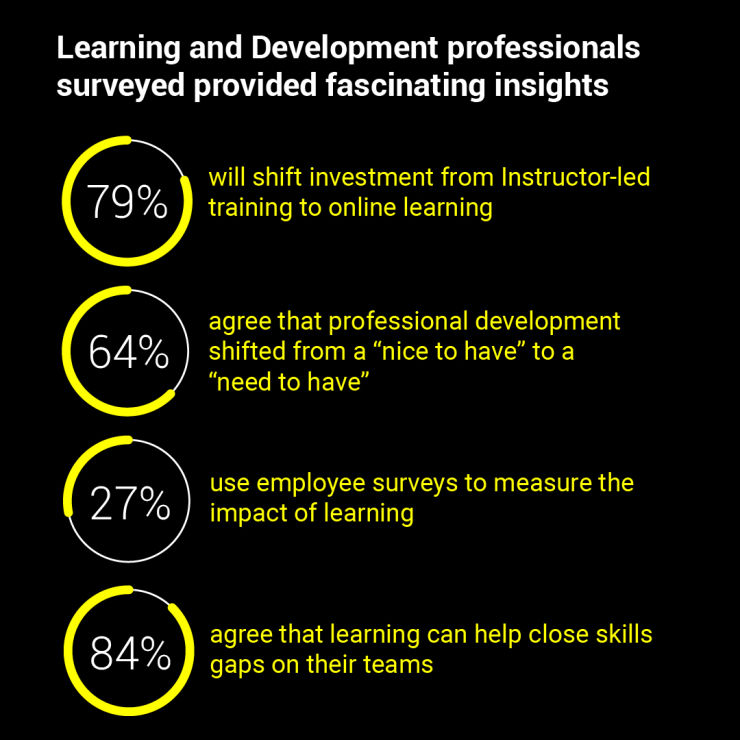
How Employers can encourage participation in Learning and Development
Failure to attract learning and development initiatives or not knowing what to measure against, often impacts business growth and employee satisfaction.
Employee engagement before and after training is crucial to the success of learning and development at every organization. The promotion of workplace training and development demonstrates to current and future employees that management cares about their professional progression. This has been proven to help those progressive organizations attract and retain top talent to take their business to the next level.
There are a host of reasons as to why training and development have become so crucial to organizations looking to get ahead of competitors in the marketplace.
Employees want it: A study of 2,000 professionals by Better Buys showed that employees with access to personal development programs have a 34% higher retention rate, and 15% say that they are more engaged at work.
It grooms future leaders: By giving employees the skills to succeed you reap the rewards by creating leaders that will help raise productivity and lower staff churn.
It encourages innovation: Recent Deloitte research shows that organizations that have a powerful learning culture are 92% more likely to create novel products and future-proof processes.

If plans to encourage team members to undertake learning and development (L&D) is keeping you up at night, you are not alone as many top individuals from high-profile companies discovered at Nexford’s HR roundtable in Lagos earlier this year. The experts and authorities in the Human Resources and People Operations space shared critical ideas and tips to solve different L&D challenges. Many of the insights came out of discussions around ideas to achieve success and a positive return on investment with learning and development initiatives.

A recent study by the Society for Human Resources Management (SHRM) revealed that 76% of employees agree that they are more likely to stay with a company that offers continuous training, while more than 1 in 2 companies are facing a skills gap, while half will address the shortfall by training existing employees.
Undoubtedly employers can encourage employees to achieve impressive ROI through increased learning and development spending. But lots must be done to realize that.
Engage with employees early
Engaging with employees early by performing a skills gap analysis can help build the initial relationship that prepares the team for specific skills, expectations, commitment and how to measure success. It equally allows managers to identify the proper training and form of delivery for the employees which often helps save cost and improves engagement. The Nexford Career Coalition offers a unique skills gap analysis methodology for employers to uncover the most needed skills to help employees grow and with that, the bottom line.
Are you ready to take your career to the next level?
Nexford's Career Path Planner takes into account your experience and interests to provide you with a customized roadmap to success.
Receive personalized advice on the skills and qualifications you need to get ahead in areas like finance, marketing, management and entrepreneurship.
Update training methods
Gone are the days of compulsory in-person training when a lot can be achieved virtually from pretty much anywhere in the world. Individuals have unique needs, speeds and learning structures, making it harder for organizations to customize for fit.
According to a recent study by SHRM, 50% of employees said the training would be more effective if it were more relevant, and 35% of HR managers said they faced challenges in finding the right content.

Create shorter training sessions and introduce social learning
Microlearning and bite-sized training methods that include some level of communication with others helps employees achieve some level of confidence and bond with others, both of which are great recipes for collaboration and increased productivity.
Nexford uses a combination of bite-sized learning including flashcards and an in-course discussion forum for learners to exchange ideas, discuss and clarify towards achieving retention and proficiency.
Develop competency-based learning
Learning and development should be designed around the overall development of the employee and as such team members who demonstrate some level of proficiency should be recognized.
For example, exposing employees to phishing attacks after cybersecurity awareness training will help validate if the training is effective and recognize employees who were able to detect the phishing attacks. More importantly, recognising employees for their performance and improvement because of learning and development will encourage other team members to be committed and help organizations achieve greater productivity.
Feedback and analytics
It is of great importance to track what is beneficial to the employee and the organization for every learning and development project. Organizations should regularly source feedback from the employees about their training experience and reassure the team members that their opinion matters.
Learning and development managers should also track engagement levels with the training such as hours spent on training, number of enrolled team members as well as projects they are working on because of the training. Companies who are in partnership with Nexford can request custom-built analytics that will help analyze and learn more about their team performance before and after the training.
According to Sheriff Popoola from 9Mobile, who urged other human resources professionals in attendance at the HR roundtable to adopt a 70-20-10 model for their learning and development project, and further stated that 70% should be around Job shadowing and roles rotation, 20% for social learning or project-based, and 10% for conventional classrooms. He additionally proposed that this approach should be custom designed as it might not be a perfect fit for all roles and industries.
Supporting this initiative, Nexford’s programs offer a perfect blend of experiential, project-based, and self-paced learning that prepares employees for future roles. Nexford’s Global Grid mentor Gbenga Totoyi recently mentioned that measuring the success of learning and development initiatives can also be tied to the line manager’s key performance indexes.
Learn how a Nexford partnership can help your organization achieve growth through learning and development.

Kolapo Imam is an MBA grad and Product Marketing Manager at Nexford. He enjoys developing creative hacks for quality research and product positioning.
Join our newsletter and be the first to receive news about our programs, events and articles.